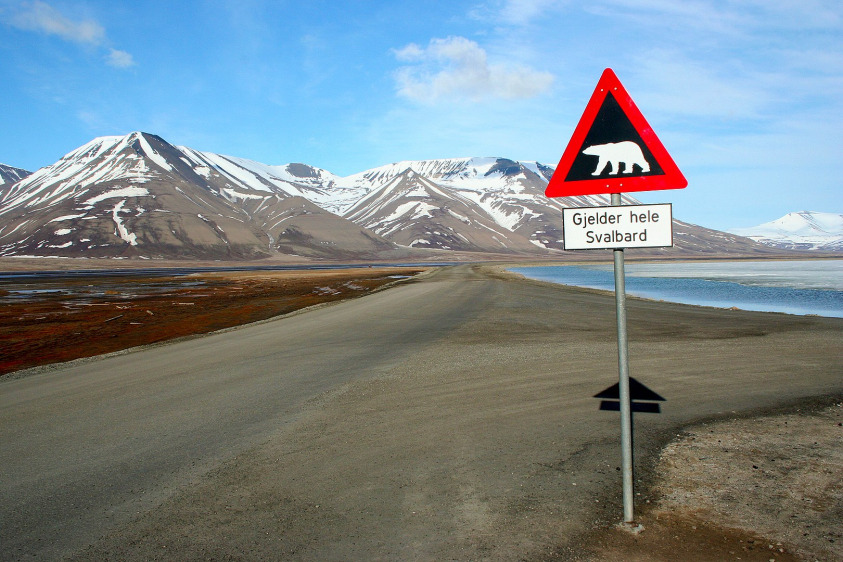News & Events
- Home
- News & Events
- News
News
Arctic has 'anomalous concentration' of radioactive particles, joint team of scientists says
A joint team of scientists has detected nuclear waste particles in the Arctic, which are likely to have come from central Europe due to warm and humid air mass. Experts from Italy, Lithuania, France, Norway and Poland analysed snow samples from the Svalbard archipelago. They found "anomalous concentration" of radioactive isotope of carbon (14C), up to three times the natural background. The authors of the study therefore conclude that it was long-range atmospheric transport of nuclear waste particles from lower latitudes, where nuclear power plants and treatment stations are located.
Surface and seasonal snow samples were collected in May 2019, and the scientific paper (co-authored by three Lithuanians – Dr. Žilvinas Ežerinskis, Dr. Justina Šapolaitė and PhD student Laurynas Bučinskas of Department of Nuclear Research in Center for Physical Sciences and Technology (FTMC)) will be published on 15 June 2023 in the prestigious Journal of Hazardous Materials.
A topic of growing importance
According to the authors of the paper, the main environmental concern related with nuclear energy is the production of radioactive waste hazardous to humans and the environment. Not all of these wastes can be properly isolated from nature, and knowledge of the characteristics of the dispersion of such materials in the environment needs to be improved in order to protect against them. This is particularly relevant in the Arctic, where ongoing climate change is increasing the frequency and intensity of climate change events and warmer winters are facilitating the long-range atmospheric transport of radionuclides.
"From a radioecological point of view, one of the most important radionuclides in biota is radiocarbon. Radiocarbon measurements provide a unique opportunity to distinguish between modern carbon (biomass burning, biogenic emission), fossil carbon (coal, diesel, petrol) and anthropogenic sources of radiocarbon from nuclear power. 14C emissions from nuclear power industry facilities increase the radiocarbon activity in the atmosphere," say the study participants, scientists from FTMC Mass Spectrometry Laboratory, Dr. Ž. Ežerinskis and Dr. J. Šapolaitė.

(Graphical Abstract of the joint team research. Image: ars.els-cdn.com)
According to the experts, the number of remote meetings with colleagues from abroad increased during the pandemic. On one occasion, Lithuanians contacted colleagues from the Department of Environmental Sciences at Ca' Foscari University of Venice and presented an idea on how to use accelerator mass spectrometer to determine the concentration of radiocarbon in snow:
"They liked the idea very much and soon presented us with hundreds of filters through which the snow collected and melted on the island of Svalbard was filtered. Our task was to properly prepare these snow filters for radiocarbon analysis, to determine 14C concentrations in the samples, to analyse the data, and to write and revise the radiocarbon section of the manuscript."

(Dr. Žilvinas Ežerinskis. Photo from personal archive)
The origin of radioactive particles
According to the article, the impact of nuclear waste on the Arctic initially focused on ocean transport, and only recently has atmospheric transport begun to be studied more widely. 14C is a very significant long-lived radionuclide with a worldwide distribution, produced and emitted by the nuclear industry.
Radiocarbon from operating nuclear reactors usually enters the environment from the coolant, but may have additional leakage if cracks or leaks occur in the structure. The other part of the 14C remains in the reactor structural materials and radioactive waste, which are also significant sources.
14C is not produced directly in reprocessing plants, but comes to them from nuclear power plants with spent fuel. Significant amounts of 14C are released into the atmosphere and the sea during the reprocessing of spent nuclear fuel.

(Dr. Justina Šapolaitė. Photo from personal archive)
How did the Lithuanians and their colleagues find out that the unusually high 14C concentrations in Svalbard are due to human activity?
"Radiocarbon concentrations are determined by the percentage of modern carbon - pMC. Naturally, the concentration of radiocarbon in the atmosphere is about 100 pMC. In some snow filters, we have measured three times the amount of 14C. Naturally, this should not be the case - it means that the radiocarbon must have come from somewhere.
A well-known example of 14C contamination is the Sellafield nuclear facility in the UK. The estimated atmospheric release of 14C from there between 1951 and 1999 was 259.2 TBq (terabecquerels) and the average annual release of 14C into the Irish Sea between 1994 and 2014 was 7.9 TBq. This example illustrates that 14C emissions are distributed in the atmosphere and biosphere and can travel very far," say the FTMC researchers.
At European level, there are no specific rules on the permissible emissions of 14C from nuclear installations. Each country sets its own guidelines to ensure the radiation safety of the population.
Scientific data on atmospheric emissions of 14C are often limited to areas close to nuclear fuel reprocessing plants, the authors write, while studies on long-range transport of 14C, which are rare, are also very important.
.jpeg)
(PhD student Laurynas Bučinskas. Photo from personal archive)
The rare opportunity to publish in a journal of this level
According to Ž. Ežerinskas and J. Šapolaitė, such studies are relevant for solving technological tasks of radiation safety, radioactive waste characterisation, management and storage:
"Such new scientific knowledge will enable the development of safe dismantling schemes for nuclear installations and technologies for radioactive waste management. Studies on the dispersion of radionuclides in the environment will provide knowledge on the magnitude of the environmental and human impact of discharged radionuclides, on accumulation and dispersion processes in the atmosphere and in the biosphere."
The Journal of Hazardous Materials is a prestigious, high-level international journal with a impact factor of 14.2. It is a difficult journal to be published, with an acceptance rate of only 14%.
It is an international forum that promotes world-class research by publishing articles in the fields of environmental science and engineering. It publishes scientific, review articles and insights for the future that improve our understanding of the hazards and risks of certain substances to public health and the environment. It publishes articles that suggest ways to assess and reduce the risk of exposure to hazardous substances.
Written by Simonas Bendžius
(Top right: a roadsign in Svalbard. Photo: Sprok / Wikipedia.org)

